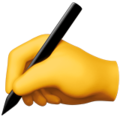Have you conducted interviews for your thesis? Then, it is also important to transcribe the interviews for your analysis. This will allow you to analyse the interview data later, or cite direct quotes in the running text. Unfortunately,transcribing an interview alone is not something you can do in just 15 minutes of work. Thus it is important to plan in a way that allows you to do this efficiently! These tips and software will help you do so.
Why do you transcribe an interview?
Transcribing the interview is necessary for your analyses. You can only code and analyse the interview data when you are clear about what exactly was said. You uncover thisby transcribing the conversation. You can then cite statements, code the conversation, categorise the statements and refer to them in a proper way.
In addition, transcribing contributes to the reliability of your research. Readers can better judge your conclusions and discussion if they can see your raw research data for themselves (the transcripts).
How do you go about transcribing an interview?
You don't transcribe an interview overnight. Writing out one-minute interviews often takes at least four minutes of your time. Fortunately, there is something you can do to make transcribing faster andmore efficient. These tips will help you.
1. Determine your transcription method
Is it necessary to write out word-for-word what the other person said? Or, is the overall content more important than the exact words and can a rough description suffice? It is a good idea to check with your supervisor beforehand about which transcription method you should use.
In practice, there are three well-known transcription methods:
-
Verbatim transcription: transcribing word for word what was said, but leaving out stop words, repetitions, hesitations, intonation and the like.
-
Literally transcribing: writing down exactly what was said while also explaining how it was said (i.e. including hesitations, words like 'uh' or silences).
-
Summarising transcription: summarising content without having to indicate verbatim the words the person said. This is similar to note-taking in meetings.
In the method chapter, indicate which transcription method you have chosen. Also, explain why you made that choice.
In practice, verbatim transcription is most common. One disadvantage of this is that some information is lost, for instance, if there is a silence. When transcribing verbatim, you do not include that kind of non-verbal information.
2. Check your audio quality in advance
The better your audio recording, the easier it will be later to transcribe the interview. Therefore, do a few test recordings before the actual interview. Check whether the sound is intelligible. This way, you won't run into any unexpected complications after the interview is finished.
3. Use interview transcription software
There are useful software tools that can make your life a lot easier when transcribing interviews. Transana is a good example of transcription software. It allows you to listen to the recording in one place and transcribe it manually. You can also slow down fragments or cut out parts.
There are also several automatic transcription softwares that can do the transcribing for you. For these, you do pay a fee per hour. Note: not every tool is equally user-friendly and accurate. Check reviews on the internet first, or request a trial transcript before you blindly rely on an unfamiliar interview transcription software.
You can use these automatic softwares, among others:
-
AmberScript
-
HappyScribe
-
Trint
Keep in mind that with each of these tools, you still need to proofread the transcript. Particularly unclear fragments can be difficult to transcribe automatically. In addition, punctuation and capitalisation are often missing and the tools do not always recognise different speakers.
4. Provide important information on the transcript
It is customary to include with each transcript when the interview took place and who you interviewed. Furthermore, note who said what for each statement. This is also necessary if it is a one-person interview rather than a focus group. Then you indicate what you said as the interviewer and which statements are from the interviewee.
Have you agreed with the interviewee to anonymise the transcript? Then choose a fictitious name or use initials instead of the participants’ whole names.
5. Adjust your transcript where necessary
Sometimes it is necessary to slightly adjust your transcript. This applies, for example, if you cannot understand part of the audio fragment properly. You can use brackets to indicate that a certain part is unintelligible.
You can also mark non-verbal signals, such as silences or when extra emphasis is placed on a word. You can do this, for example, as follows:
It wasn't immediately clear to me. [1 second silence] No, I just doubt whether that is how it happened.
It was a matter of either accumulating a high student debt or quitting my studies. [emphasis added by italicising ‘either...or']
6. Properly incorporate transcripts into your thesis
You often put interview transcripts in the appendices. This avoids making the text of your thesis unnecessarily long but still allows your audience to read the full interview if they would like.
In addition, sometimes it is useful to refer to specific excerpts from the conversation in the running text. You can do this by quoting or paraphrasing an excerpt.
First aid for interviewing?
Want to know more about how to properly handle interviewing for your thesis? We have several articles on interviewing online. Read about what good interview questions are, check out our roadmap for conducting interviews and read all about useful interviewing techniques.


